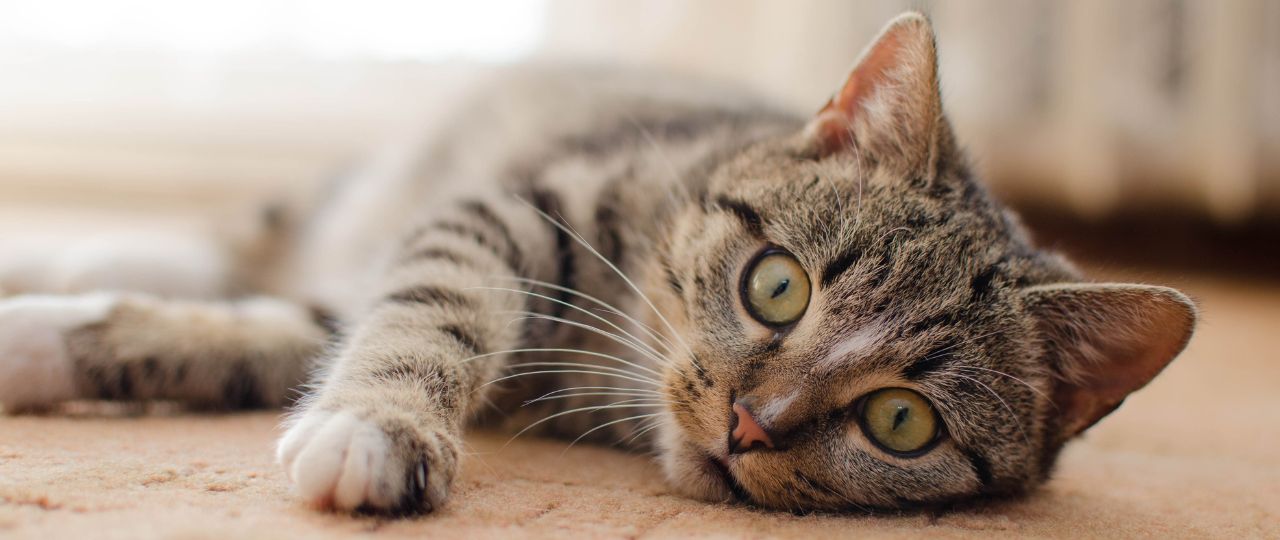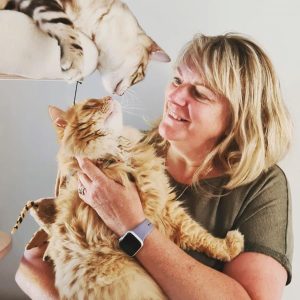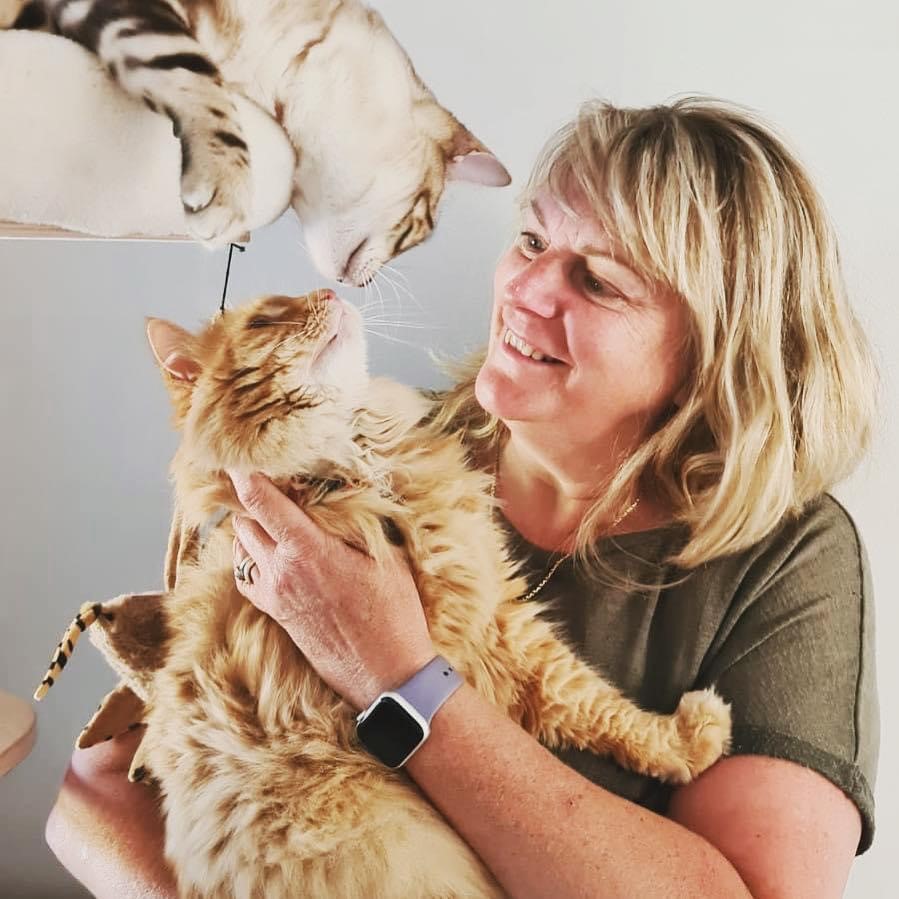
Why do cats rub their faces and bodies on walls and surfaces?
1
Cats have unique scent glands located all over their body. On the face, there are five facial pheromones which are located on the cheeks, chin, lips and forehead. These glands secrete pheromones, which are chemical signals used for communication and are unique to each cat just as a fingerprint is to us. When a cat rubs its face on objects or people, it’s depositing these pheromones. This behaviour is known as allo marking and is a common social interaction among cats. This behaviour serves as a territorial claim and can be a comforting gesture, as cats associate familiar scents with safety and security.
2
When cats rub their faces specifically on corners or edges of objects, they are targeting areas where their scent can be more prominently deposited. Each facial pheromone carries a different pheromone component and is identified as F1 to F5. The F3 facial pheromone is deposited, especially on corners which often have a higher concentration of scents due to these areas being at cat nose height allowing them to brace against the corner intensifying the rub, making them ideal spots for cats to leave their mark.
3
Cat scent glands play a crucial role in feline communication and behaviour. The majority of cat-cat language and interaction is nonverbal. Apart from the glands on their face, cats also have scent glands located on other parts of their bodies, such as their interdigital paw pads and the base of their tail. These glands produce pheromones that convey information about the cat’s identity, reproductive status, and emotional state to other cats in the environment. Understanding the significance of these scent glands helps us decipher the complex social dynamics and territorial behaviours exhibited by cats. At times of stress in the home whether it be a new baby, new cat or change of routine, placing synthetic pheromones such as Comfort Zone in the home that mimic the ‘happy pheromones’ it can help a cat feel instantly calmer and more secure in its environment. These are available in plug-in devices, sprays or even collars.
References:
- Bradshaw, J. W. S. (2016). The Behaviour of the Domestic Cat. CABI.
- Miyazaki, M., Yamashita, T., Suzuki, Y., & Saito, Y. (2019). Social factors influencing scent-marking behavior in free-roaming domestic cats. Journal of Veterinary Behavior, 30, 20-26.
- Pageat, P., Gaultier, E., & Patris, B. (1998). When cats cannot express themselves through meowing: studying the diagnostic value of urinary pheromones in the cat. Veterinary Medicine Series, 93(6), 526-530.
Amanda Campion
Clinical Feline

Amanda Campion
Clinical Feline Behaviourist

